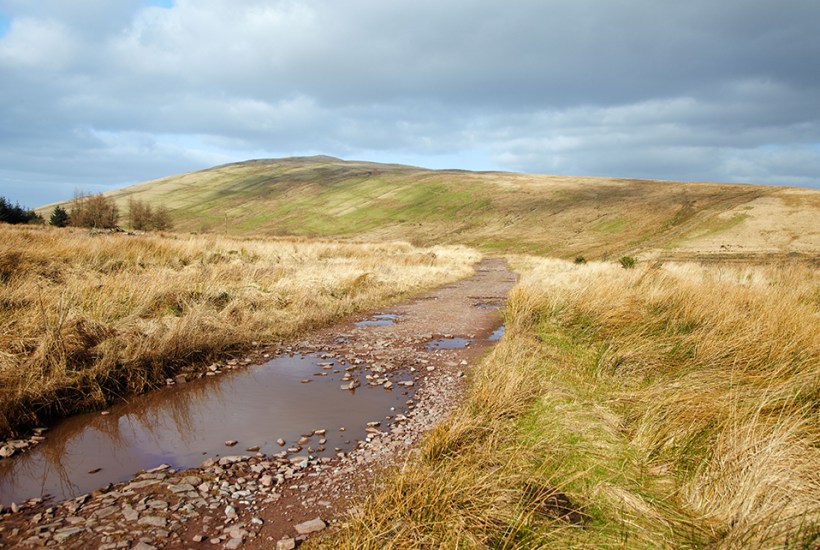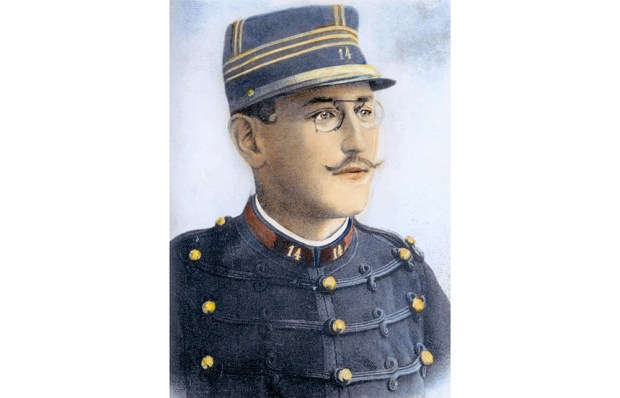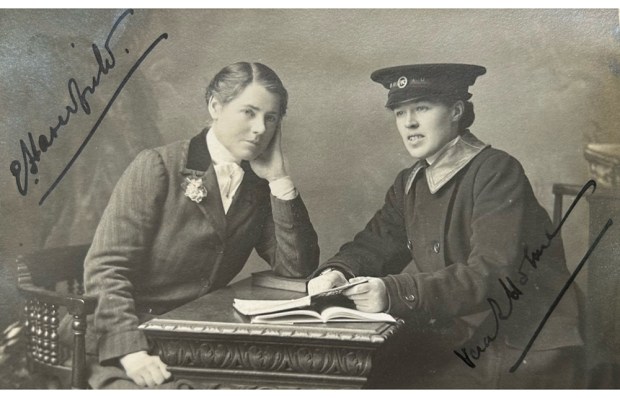In recent years, more and more nature writers have begun to engage with the climate crisis. On the one hand, they want to raise awareness of the scale of the problem; on the other, they try to make more tangible those apocalyptic visions of the future. In Sarn Helen, Tom Bullough asks how the crisis is affecting Wales, while walking the old Roman road that linked the country’s south coast with the north. As he writes in his prologue, Wales is not the front line of the emergency, but by focusing on the local, he hopes to give meaning to this vast, diffuse and complex threat.
Sarn Helen is several books in one. At its simplest, it describes the long walk the author made in sections over several months between the various pandemic lockdowns. Along the route he describes the places he passes through, and their history in particular during the ‘Age of Saints’ – the centuries after the Romans left Britain when Wales became a centre of Celtic Christianity. Mixed in with this account he records conversations with climate scientists on the declining state of the environment in Wales and the wider world. The book is also illustrated with paintings by Jackie Morris, showing 15 of the country’s endangered species, including the kestrel, the otter and the beautiful pearl-bordered fritillary.
For many years, Bullough ‘made every effort to avoid any information relating to climate or ecology, living instead with an obscure anxiety – which is, I suspect, quite a common condition’. He had two young children to look after, and his life already seemed hard enough. He did not deny the fact of climate change, but was more comfortable ignoring its scale. No doubt many will share this state of anxious paralysis, and the various narrative strands show different ways of confronting the crisis directly.
Bullough’s previous books have been novels, mostly set in rural Wales, and his non-fiction displays the same sensitivity to the countryside. For example, looking out across a wide stretch of the Welsh landscape
is like watching somebody you love in sleep. The glare of the afternoon is gone, and in its place is a tenderness which envelops this whole expanse: these shades of green becoming grey; this giant sky with its high, rippled clouds, which in Radnorshire you used to call ‘cruddledy’, curdled.
It soon becomes clear, however, that even the typical Welsh landscape – flat-topped hills with grazing sheep on grassy slopes – is made and sustained by human influence. Thousands of years ago, those uplands were covered with forests, which were cut down to farm livestock. Today, basic payments from the government constitute some 84 per cent of the typical farm income, while those subsidised sheep are producing methane 80 times more damaging than carbon dioxide. Even the peat bogs are so degraded that they release more carbon dioxide than the old quarries and copper works.
Often Bullough walks in the company of friends and locals who describe how the country has altered with time. Their tone is typically conservative, with every change registered as a loss: more cars, more satellite dishes, more holiday homes. At one point even robot lawnmowers come in for criticism: ‘In a country where one in six species of all wildlife, plants and fungi are threatened with imminent national extinction, their job is to kill any weed or flower that might potentially foster life.’ His interviews with academics and climate experts are equally solemn. Most are pessimistic about society’s desire to change its habits, and about their own capacity to provide a miracle cure. ‘The scientists aren’t going to fix this,’ one says. Because these interviews took place on Zoom, they retain much of the stiffness of that format, with Bullough listing statistics and naming reports to show that he has done his homework.
By contrast, his description of his arrest for protesting offers some of best writing in the book: ‘Publicly, deliberately to disobey the law: it is contrary to your every instinct. It is like a rebellion against yourself.’ Similarly, his statement during the subsequent trial, reproduced in full, is a deeply moving description of the fear he feels for his children’s future on a warming planet.
To me, this was the most effective call to arms, and I was curious to know more about Bullough’s conversion to determined activism. The suggestion is that it was really love that worked the change – for his family, for his home, for the plants and animals of his country. And if nature writers want to draw more people to the environmental cause, this book makes clear that love works much better than fear.
Got something to add? Join the discussion and comment below.
Get 10 issues for just $10
Subscribe to The Spectator Australia today for the next 10 magazine issues, plus full online access, for just $10.
You might disagree with half of it, but you’ll enjoy reading all of it. Try your first month for free, then just $2 a week for the remainder of your first year.














Comments
Don't miss out
Join the conversation with other Spectator Australia readers. Subscribe to leave a comment.
SUBSCRIBEAlready a subscriber? Log in